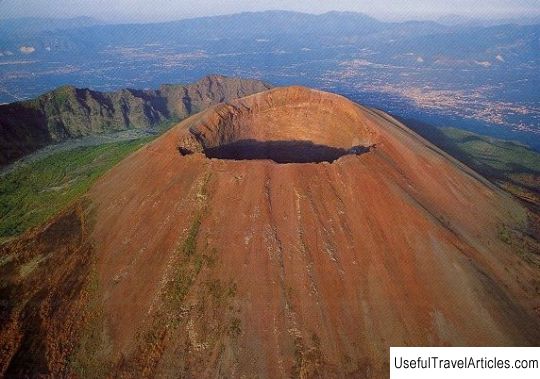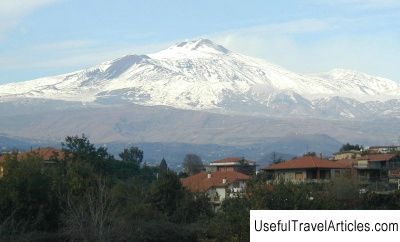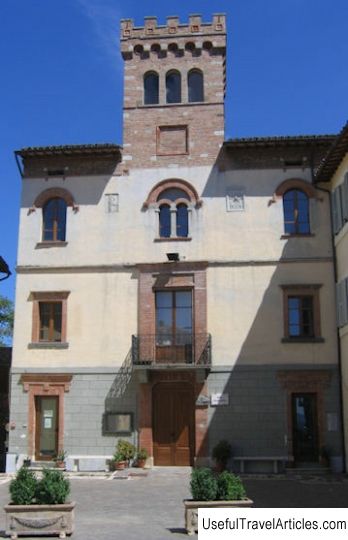Vesuvio National Park description and photos - Italy: Campania
Rating: 8,6/10 (4893 votes) 
Vesuvio National Park description and photos - Italy: Campania. Detailed information about the attraction. Description, photographs and a map showing the nearest significant objects. The name in English is Vesuvio National Park. Photo and descriptionVesuvius National Park, of great geological and historical value, was created in 1995 to protect one of the most famous volcanoes in the world, which dominates the Gulf of Naples. The Somma-Vesuvius volcanic group is considered one of the most active in continental Europe and has been active for 400 thousand years, as evidenced by lava and tuff, alternating with marine sediments in the southeastern part of the volcano at a depth of 1350 meters. And the current appearance of Vesuvius and its surroundings is the result of its activities and other geological processes. Numerous eruptions of the volcano have enriched the soil on its slopes with valuable minerals and made it extremely fertile, which has attracted a person here since ancient times who is not afraid of possible dangers. Apricots, peaches and the famous small tomatoes are grown here, not to mention the delicious grapes from which the world-renowned wine is made. Vesuvius is a typical example of a volcano within a volcano, consisting of an outer cone, Monte Somme, and an inner, smaller cone, Vesuvius itself. The northern part of the ancient crater of the Somme is well preserved, and its slopes are dotted with deep gorges. By far the most famous eruption of Vesuvius was the one that happened in 79th year and completely destroyed the cities of Herculaneum, Pompeii and Stabia, burying them under a layer of lava and ash. Some scholars believe that this eruption, known as Pliny's, gave birth to the present Gran Kono cone. The next catastrophic eruption happened in 1631, when many settlements were destroyed at the foot of the volcano, and about 40 thousand people died. The last eruption was recorded in 1944 - the volcano erupted about 21 million cubic meters of lava, and the ash from it reached the territory of Albania. Since then, Vesuvius has passed into the stage of a "dormant" volcano, but regularly reminds of itself. The Volcanological Observatory, located in the National Park in Herculaneum, is studying the activity of Vesuvius, as well as other volcanoes in the world. This first volcanological observatory in the world occupies the building of the Hotel Eremo, built in the 19th century, and can offer tourists a tour of a small museum with ancient scientific instruments. The slopes of Vesuvius and the Somme are very different from each other in terms of ecology. Vesuvius soil is drier and its slopes in the past were specially forested to avoid mudflows. Today you can find dense thickets of Mediterranean shrubs here. A mixed forest grows on the wetter slopes of the Somme. In total, about 610 plant species grow here, but only 18 of them are endemic. The forests are inhabited by dormouse, stone martens, foxes, rabbits and hares. The bird kingdom is represented by 100 species of birds - buzzards, kestrels, peregrine falcons, sparrowhawks, hoopoes, woodpeckers and many others. There are 13 cities, a UNESCO protected biosphere reserve and a forest reserve in the Vesuvius National Park with an area of 8482 acres. And you can get acquainted with all this natural, cultural and historical heritage by going on a journey along one of 9 specially created hiking trails.      We also recommend reading Simeonovskaya church description and photo - Russia - Golden Ring: Pereslavl-Zalessky Topic: Vesuvio National Park description and photos - Italy: Campania. |




